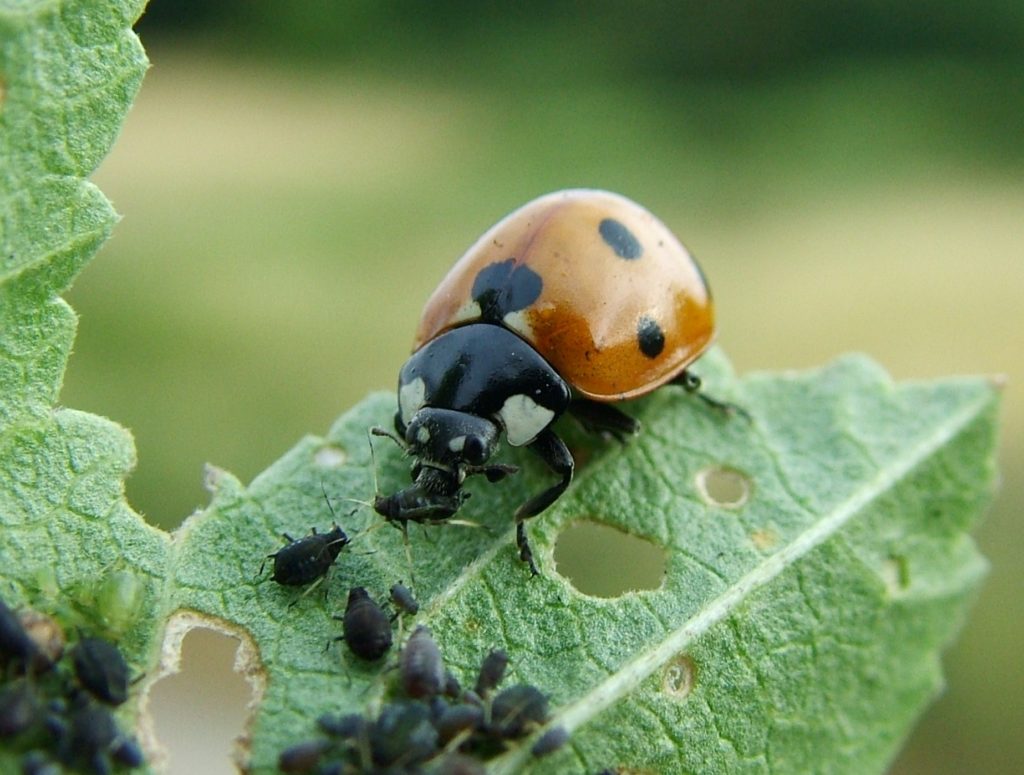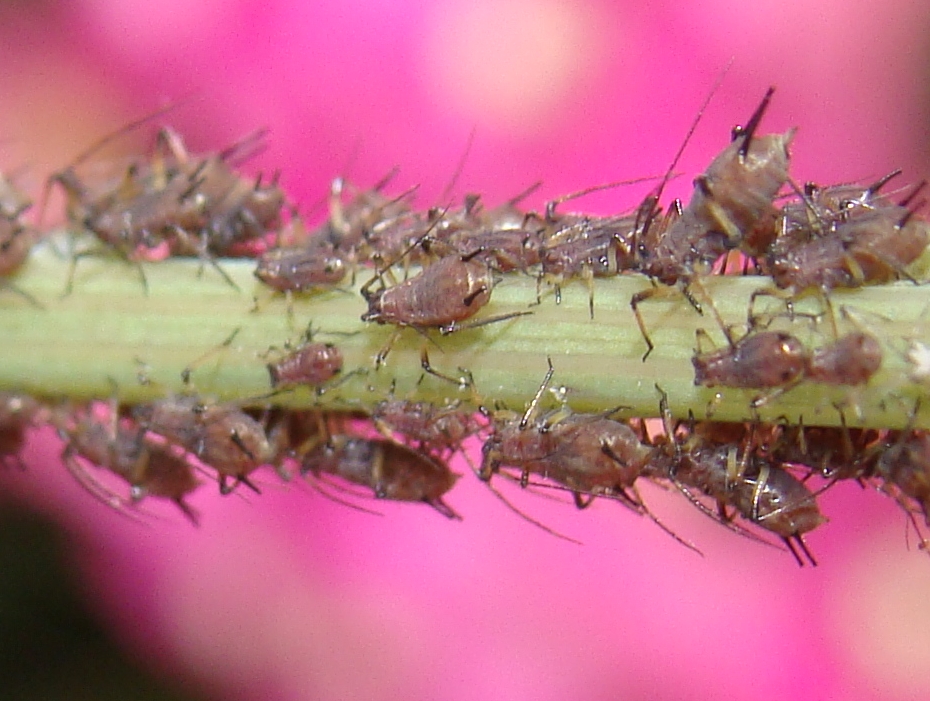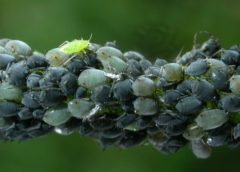By Radhika Desikan
Being sessile, plants are faced with constant pressures from their environment, such as extreme climates, microbes, and herbivores including insects and animals. To cope with these challenges, some plants have evolved the ability to tolerate particular stresses or defend themselves against insect pests. For decades, scientists have been trying to understand how some plants tolerate these challenges, with the aim of improving overall plant health and increasing crop yields.
Aphids are a problem
Aphids are common pests of most cultivated plants. They belong to a family of sap-sucking insects that feed on plants, causing loss of plant vigour and distorted growth. They are commonly known as greenflies or blackflies, but they can also be other colours. Aphids secrete a sticky substance called honeydew on the surface of plants, which results in the growth of mould, endangering plants’ health. Some aphids also transmit viruses that cause plant diseases.
Management of aphid infestations has not been easy for farmers. While aphids have natural predators such as ladybirds (ladybugs) and hoverfly larvae, introducing these is not a guaranteed method to consistently protect crops in the field. Natural pesticides against aphids also exist; they are less harmful to the environment, but their use might not always be economical for farmers. Aphids tend to attack maize near deeper parts of leaf sheaths that are hard to visually detect until the infection has already spread. At this point, farmers quite often resort to using synthetic pesticides which inhibit aphids from reproducing, thereby protecting plants from further attack. The downside of using these synthetic pesticides is that they are harmful to the environment, contaminating water bodies and therefore aquatic life. So, how can this be avoided and how can farmers use better methods to protect plants and the environment?


Plants have a solution
Traditional breeding methods have produced several varieties of crops, such as maize, that are naturally resistant to different stresses including aphid attack. The challenge has been to identify visual traits and genetic markers associated with aphid resistance. In addition, identifying cellular changes in a plant specifically associated with aphid resistance would benefit breeding programmes. In a new study, Varsani and colleagues have identified mechanisms by which a maize inbred line is naturally resistant to corn leaf aphids (CLA). Their findings highlight previously unidentified cellular processes that lead to resistance to CLA.
Plants that are resistant to aphids exhibit an increase in deposition of callose, a complex compound that is deposited in phloem cells, from which aphids suck the plant sap. Callose deposition leads to blocking of the phloem vessels, thereby inhibiting the food source for aphids and leading to their death. Plants also defend against aphids by producing secondary metabolites and other defence signals such as the hormone jasmonic acid (JA). Using the maize inbred line Mp708, the researchers found that this CLA-resistant line showed an increase in callose deposition in the phloem vessels, compared to another line that was susceptible to CLA. They also found that Mp708 plants had increased levels of a secondary metabolite, 12-oxo-phytodienoic acid (OPDA). OPDA appeared to cause an increase in callose deposition, leading to resistance in Mp708 plants. However, OPDA on its own did not affect the viability of aphids; rather, it acted via biosynthesis of the hormone ethylene, not JA, in the resistant plants but not in the susceptible plants.


By using these findings, scientists can now examine whether selecting and breeding plants that have increased levels of OPDA could make them more resistant to aphids. This would ultimately help farmers who cultivate maize to have better yields and less likelihood of attack from CLA. If it also turns out that OPDA is essential for resistance to different aphids by all plants, the future would hold good prospects for aphid-free plant breeding. We could potentially grow plants without having to worry anymore about these destructive pests in our gardens.
This study was published in the journal Plant Physiology.
Featured image: Aphids come in hoards and can suck a plant dry. Photo by Nigel Jones via Flickr.
—Radhika Desikan is a plant scientist by training who has taught plant science for several years, and researched and published on the behavior of plants facing various abiotic and biotic stresses. Radhika recently became interested in plant science outreach to schools and communicating plant science to a younger audience.
Reference
Varsani, S., Grover, S., Zhou, S., Koch, K., Huang, P., Kolomiets, M., … Louis, J. (2019). 12-oxo-phytodienoic acid acts as a regulator of maize defence against corn leaf aphid. Plant Physiology, 179. Retrieved from https://doi.org/10.1104/pp.18.01472
GotScience Magazine is published by the nonprofit Science Connected and is made possible by donations from readers like you. You can support open-access science news—and it only takes a minute. Donate now.

